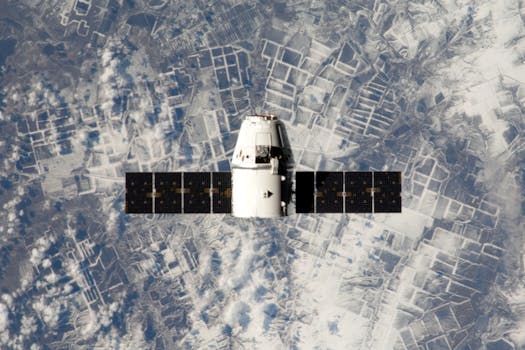The Future of Satellites: Revolutionizing Global Connectivity
The future of satellites is poised to revolutionize global connectivity, enabling faster and more reliable communication services. With advancements in space technology, satellites are becoming increasingly important for various industries, including telecommunications, navigation, and weather forecasting.

The Future of Satellites: Revolutionizing Global Connectivity
The future of satellites is poised to revolutionize global connectivity, enabling faster and more reliable communication services. With advancements in space technology, satellites are becoming increasingly important for various industries, including telecommunications, navigation, and weather forecasting. The focus keyword Future of satellites is becoming a crucial aspect of modern life, and its impact will be felt across the globe.
Satellites have been in use for several decades, but recent advancements in technology have made them more efficient, cost-effective, and accessible. The launch of new satellite constellations, such as OneWeb and Starlink, is expected to increase global connectivity, providing high-speed internet services to remote and underserved areas. These constellations will consist of thousands of small satellites in low Earth orbit, offering faster and more reliable communication services.
Advancements in Satellite Technology
Advancements in satellite technology are driving the growth of the satellite industry. New materials and designs are being developed to make satellites more efficient, lightweight, and cost-effective. The use of advanced propulsion systems, such as electric propulsion, is also becoming more prevalent, enabling satellites to maintain their position and altitude more efficiently. Furthermore, the development of new antenna technologies, such as phased arrays, is improving the performance and capacity of satellite communication systems.
The use of artificial intelligence (AI) and machine learning (ML) is also becoming more widespread in the satellite industry. AI and ML algorithms can be used to analyze large amounts of data from satellites, enabling the detection of patterns and anomalies that may not be visible to the human eye. This can be particularly useful for applications such as weather forecasting, where satellites can provide vast amounts of data on atmospheric conditions.
Applications of Satellites
Satellites have a wide range of applications, from telecommunications and navigation to weather forecasting and Earth observation. Telecommunications satellites are used to provide communication services, such as telephone and internet connectivity, to remote and underserved areas. Navigation satellites, such as GPS, are used to provide location information and timing signals, enabling accurate navigation and positioning.
Weather forecasting satellites are used to monitor atmospheric conditions, providing vital information for weather forecasting and climate modeling. Earth observation satellites are used to monitor the Earth’s surface, providing information on land use, deforestation, and ocean health. These applications are critical for various industries, including agriculture, forestry, and fisheries, and are essential for monitoring the health of our planet.
Challenges and Opportunities
Despite the many benefits of satellites, there are also challenges and opportunities that need to be addressed. One of the major challenges is the growing amount of space debris in Earth’s orbit, which can pose a risk to operational satellites. The development of new technologies and regulations is needed to mitigate this risk and ensure the long-term sustainability of space activities.
Another challenge is the need for greater international cooperation and agreement on issues such as spectrum allocation and satellite regulation. The satellite industry is global, and international cooperation is essential to ensure that satellites can operate effectively and efficiently. The development of new international agreements and regulations will be critical for the future of the satellite industry.



